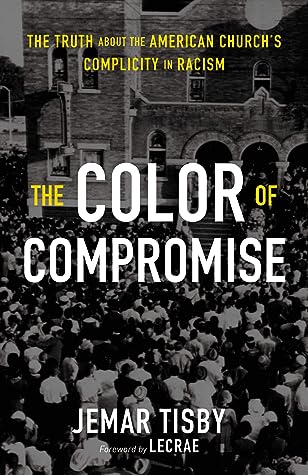More on this book
Community
Kindle Notes & Highlights
by
Jemar Tisby
Read between
June 20 - September 4, 2024
As Christians, when we read the Bible, we recognize that events that happened thousands of years ago are still relevant today. We also see that Scripture never hides the ugly parts of history when it comes to the people of God.
Just as we can’t take out the parts of the Bible that we don’t like or that make us uncomfortable, we can’t celebrate the shining moments of the American church’s history and then ignore the shameful aspects of that history. We either fully acknowledge the entire history or dismiss it all.
“Like a boil that can never be cured so long as it is covered up but must be opened with all its ugliness to the natural medicines of air and light,” he wrote, “injustice must be exposed, with all the tension its exposure creates, to the light of human conscience and the air of national opinion before it can be cured.”9
It seems like most Christians in America don’t know how bad racism really is, so they don’t respond with the necessary urgency.
Although the missed opportunities are heartbreaking, the fact that people can choose is also empowering. Christians deliberately chose complicity with racism in the past, but the choice to confront racism remains a possibility today.
The goal is to build up the body of Christ by “speaking the truth in love,” even if that truth comes at the price of pain.
It must be noted, however, that Europeans did not introduce Christianity to Africans. Christianity had arrived in Africa through Egypt and Ethiopia in the third and fourth centuries.
Even as white southern Christians denounced northerners for making fidelity to the Union a requirement for fellowship, they made acceptance of race-based chattel slavery a requirement of biblical orthodoxy.
The release of this book after the war reveals that the formal end of military conflict did little to change the minds of southerners about slavery. Many remained committed to slavery as orthodox, biblical truth.
Dabney saw white Christian slaveowners as loving people standing between the enslaved and eternal damnation.
Had Dabney personally experienced the reality of enslavement, perhaps he would have been less confident about its salutary spiritual effects.
God, I am so confused about so many things. This scripture seems like it is a justification for the genocide and enslavement of the Canaanites by Israel. I believe you are God. I believe Jesus is the Son of God who died and rose from the dead. But I am really having a difficult time with these words written by men when I have seen first hand what men who have power will do to keep that power. They lie and abuse their power and abuse people and destroy people’s lives for their power. So why wouldn’t they invent stories thousands of years ago to justify their decisions and keep the people following them?
The Servicemen’s Readjustment Act, better known as the GI Bill, included substantial aid designed to help military veterans reintegrate into civilian life. This welfare program assisted GIs in purchasing homes, paying tuition for college, and gaining health coverage.
Through a series of rules and customs, government employees and real estate agents have actively engineered neighborhoods and communities to maintain racial segregation.
The HOLC policy was a form of government-sponsored racism.
Redlining practices persisted into the 1950s and 1960s, making residential desegregation one of the main fronts for civil rights activism in the North.
so an alliance of religious leaders—Catholic, Protestant, and Jewish—came together in 1962 to form the Religion and Race Conference.
“What galvanized the Christian community was not abortion, school prayer, or the [Equal Rights Amendment]. . . . What changed their minds was Jimmy Carter’s intervention against the Christian schools, trying to deny them tax-exempt status on the basis of so-called de facto segregation.”
If the American church wants to make a clear break with the racial compromise that has characterized its past, then believers must agree that it is time to take down the Confederate monuments.
The statues and flags stand both as a message that America is the “white man’s country” and as a way to redeem the Confederacy in the eyes of southerners and the nation.
Symbols of the Confederacy only represent a part of the community, a part that stood for the preservation of slavery.
In the name of God, will other Christians stand against the visible symbols of racism promoted in America’s public places?
The Negro spiritual put black lamentations into songs that soared upward as prayers for God to save them and grant them the perseverance to exist and resist.
They looked to the book of Exodus and saw God saving the Israelites from slavery. In the white slaveowners they saw “old Pharaoh” and knew they could pray, “Let my people go.”
The entire church can learn from believers who have suffered yet still hold onto God’s unchanging hand.
Those who have suffered much find much joy in God’s salvation.
After laboring all week under the dehumanizing conditions of slavery, black Christians celebrated on Sunday. They thanked God for giving them life and breath and the full functioning of their faculties. They worshiped God as an outlet for the creativity and vitality that had been suppressed all week.
As the church learns to value the unique applications of eternal biblical principles across people groups, it will grasp more of God’s truth than ever before.
Education must lead to liberation. The acquisition of knowledge should not result only in personal enlightenment but also the alleviation of oppression.
It is time for the church to stand against racism and compromise no longer.


